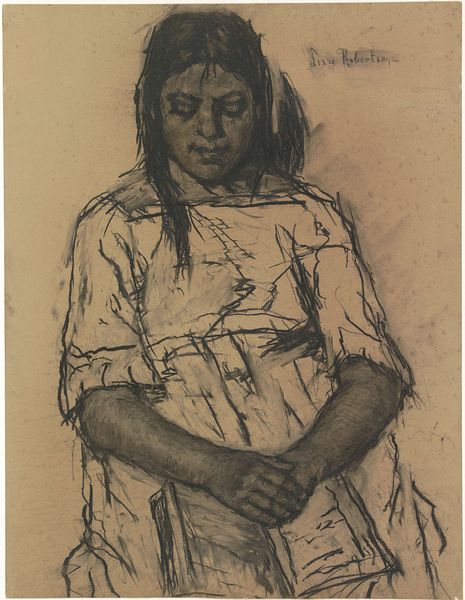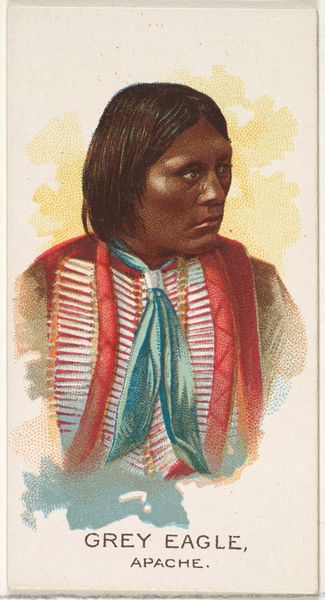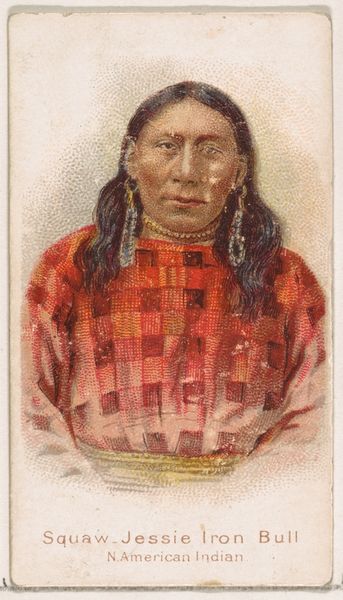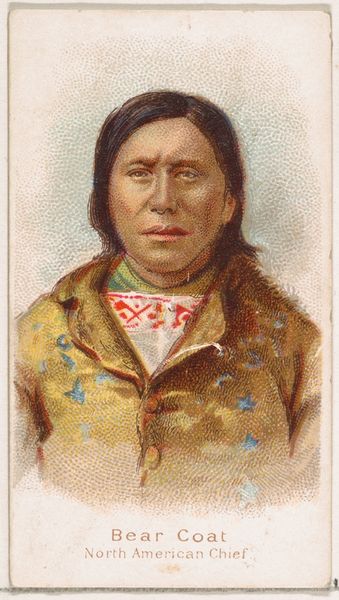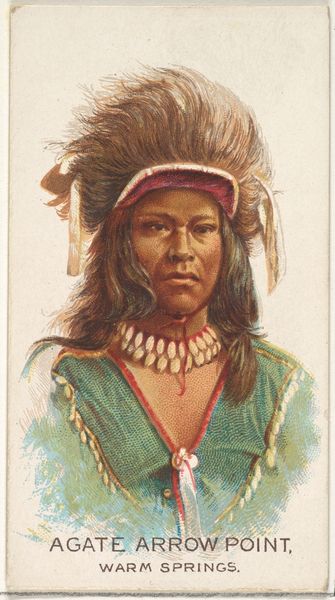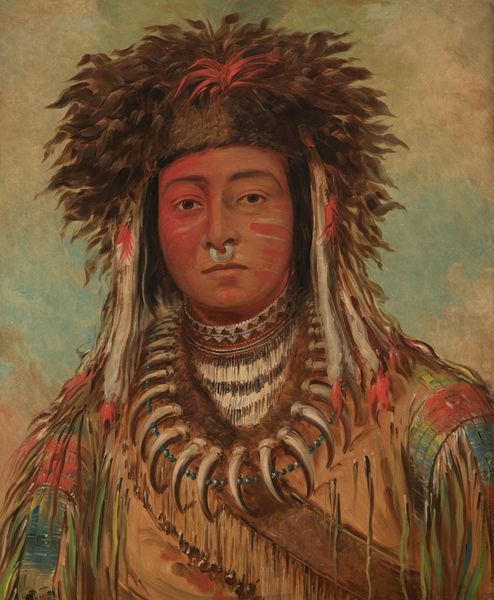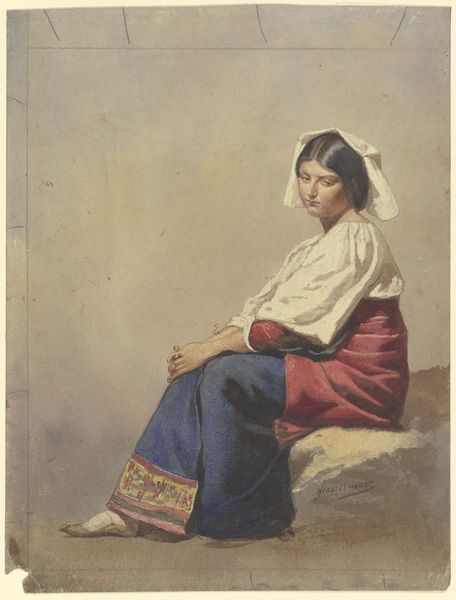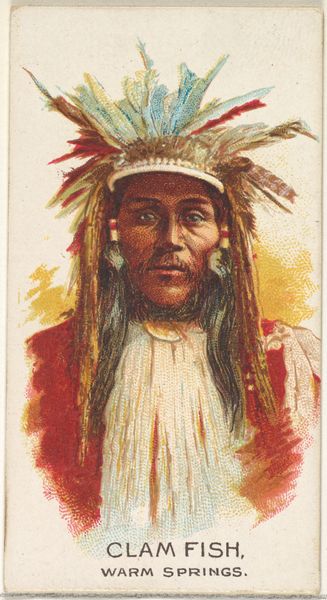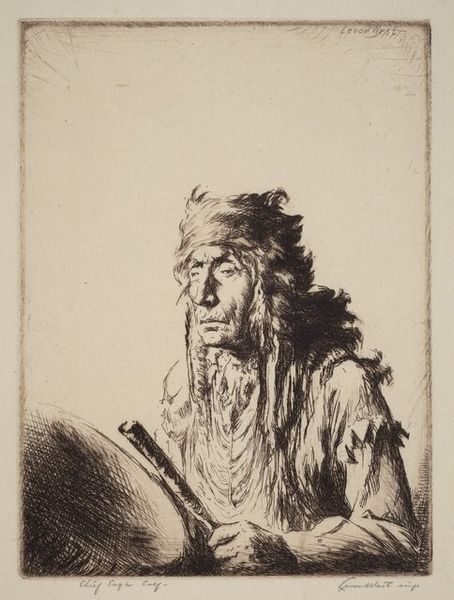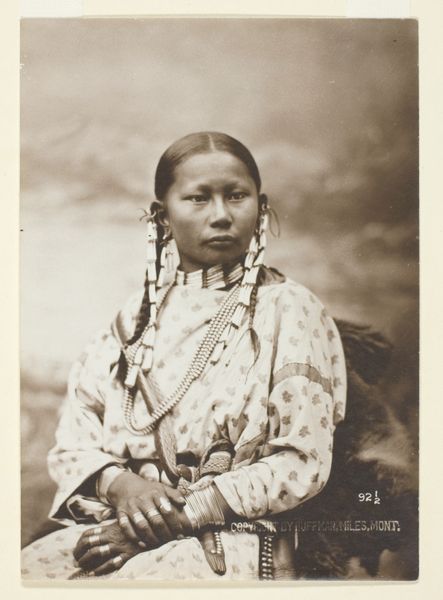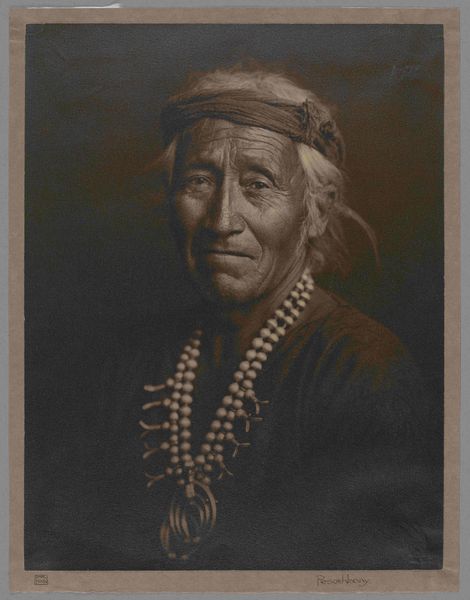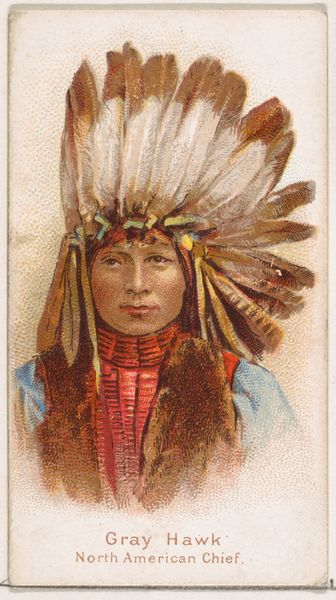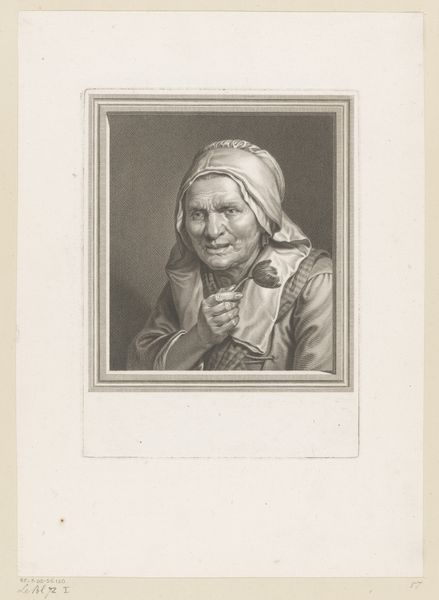
drawing, paper, charcoal
#
portrait
#
drawing
#
charcoal drawing
#
paper
#
pencil drawing
#
portrait drawing
#
charcoal
Dimensions: unframed: 22.9 x 18.4 cm (9 x 7 1/4 in.) framed: 33 x 28.3 x 1.9 cm (13 x 11 1/8 x 3/4 in.)
Copyright: National Gallery of Art: CC0 1.0
Curator: Standing before us is George de Forest Brush's "An Arapahoe Boy," a charcoal drawing from around 1882. My first thought is how wonderfully sensitive the piece is. There's such a palpable quiet dignity in this young person's eyes. Editor: The intimacy you point out is definitely present. Looking closer, though, I can't help but also notice the loaded context of this portrait. It was created during a period of intense pressure and forced assimilation for Indigenous peoples in America, especially after the Indian Wars of the 1870s and 80s. Curator: That makes sense. When you frame it that way, it gives the artwork added layers of meaning. Brush definitely seems intent on capturing not just a likeness, but something essential about his humanity, a spirit unbroken despite those pressures. The textures, particularly the rendering of the hair and clothing ornamentation, hint at both individuality and a broader cultural identity. Editor: Exactly. Consider what it might have meant for Brush, an artist working within a Western tradition, to choose this subject. Was he actively resisting dominant narratives? Or was this representation complicit in its own way, by romanticizing and therefore containing Indigenous identity within a frame that ultimately still benefits the dominant culture? Curator: Oh, the frame. I’ve found that some artists make work with so much good intent that to be interpreted negatively years later is painful to consider. I choose to see it as he gave a space and humanity to a Native child who at the time wasn't visible or valued. I might be wrong but what is life without some level of loving assumption? Editor: The inscription, partially visible at the bottom, gives the work a poignant layer. The work, inscribed “To Mrs. Ermine Smith, from her friend, Geo. de F. Brush," points towards this artist’s personal relationships, embedded within his larger vision. Curator: Seeing that intimacy really reinforces my initial impression. It speaks to the importance of seeing art not as separate from life, but totally intertwined with it. The artist has given us the grace of gentle friendship for decades on display. Editor: Indeed. Works such as Brush's offer us glimpses of these complicated pasts. Hopefully, as time progresses we may collectively understand the value of humanity despite perceived cultural differences.
Comments
No comments
Be the first to comment and join the conversation on the ultimate creative platform.
